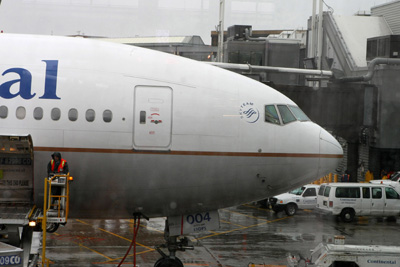
A pilot of a trans-Atlantic Continental Airlines flight died enroute from Brussels to New Jersey today. Is this a big deal? Yes, certainly, for the pilot and his family but it’s not a situation that appears to have presented a significant safety risk.
There was an eye-opening fact in the Midwest Flyer magazine interview with Jeff Skiles, the first officer of the US Air flight that ditched in the Hudson River in January.
The Airbus actually flies with a side-stick; it doesn’t use a yoke. And this is something totally new in my experience. I’ve never flown anything that did not have a yoke before. I only had 35 hours in the airplane. The vast majority of the time, it was on autopilot, because they encourage you to use the autopilot as much as possible. Ideally, they want you to takeoff and put it on at 100 feet, and don’t take it off again until you are on short final.
A machine/computer flies the airplane from just a few seconds after take-off to just a few minutes before landing. Sometimes autopilots land the plane, although someone has to enter the data.
What’s more likely to be significant in the story, however, is the age of the deceased pilot: 61. That’s one year more than the mandatory retirement age that was in effect for decades in the U.S., until the FAA raised it to 65 not long ago. At least one pilot on international flights still has to be under 60.
(Photo: Daniel Barry/Getty Images)
